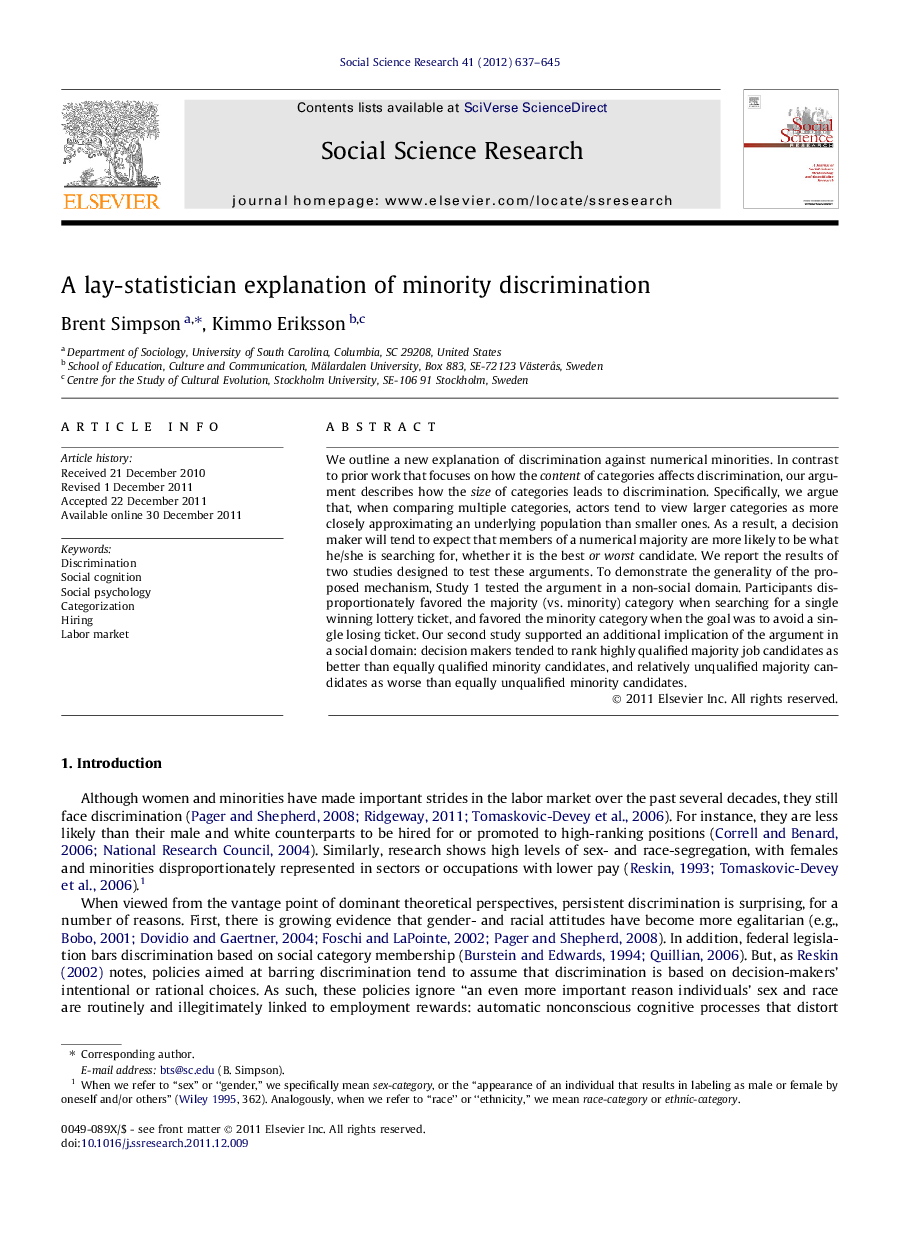| Article ID | Journal | Published Year | Pages | File Type |
|---|---|---|---|---|
| 956014 | Social Science Research | 2012 | 9 Pages |
We outline a new explanation of discrimination against numerical minorities. In contrast to prior work that focuses on how the content of categories affects discrimination, our argument describes how the size of categories leads to discrimination. Specifically, we argue that, when comparing multiple categories, actors tend to view larger categories as more closely approximating an underlying population than smaller ones. As a result, a decision maker will tend to expect that members of a numerical majority are more likely to be what he/she is searching for, whether it is the best or worst candidate. We report the results of two studies designed to test these arguments. To demonstrate the generality of the proposed mechanism, Study 1 tested the argument in a non-social domain. Participants disproportionately favored the majority (vs. minority) category when searching for a single winning lottery ticket, and favored the minority category when the goal was to avoid a single losing ticket. Our second study supported an additional implication of the argument in a social domain: decision makers tended to rank highly qualified majority job candidates as better than equally qualified minority candidates, and relatively unqualified majority candidates as worse than equally unqualified minority candidates.
► We outline a new explanation of discrimination against numerical minorities. ► Our arguments link discrimination to the category size. ► Two studies support the predictions. ► Qualified majority applicants are ranked higher than comparable minorities. ► Unqualified majority applicants are ranked worse than comparable minorities.
